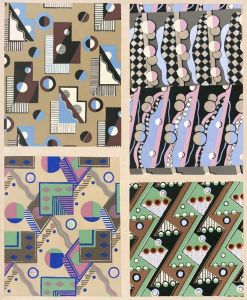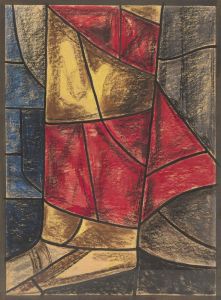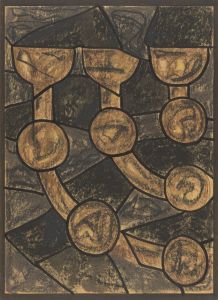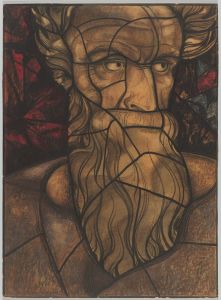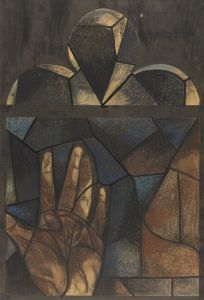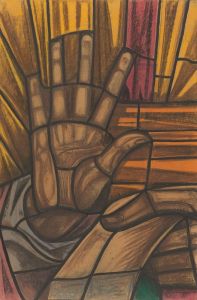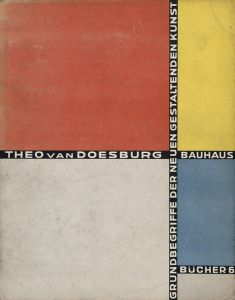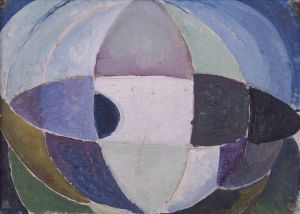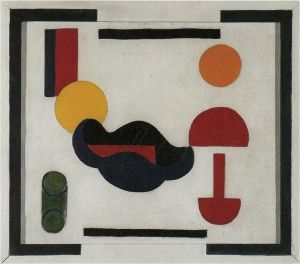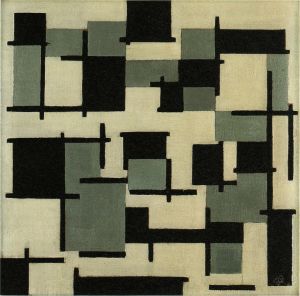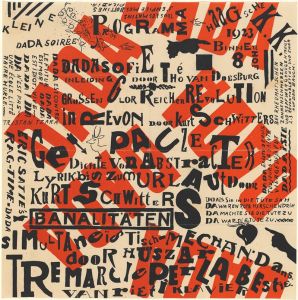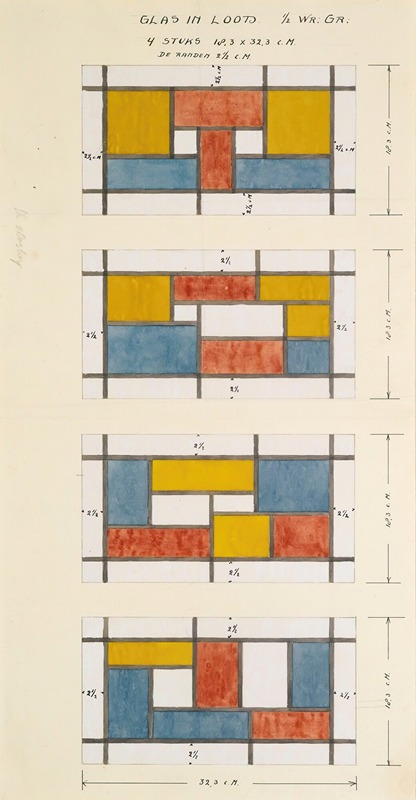
Design For A Stained Glass Window
A hand-painted replica of Theo van Doesburg’s masterpiece Design For A Stained Glass Window, meticulously crafted by professional artists to capture the true essence of the original. Each piece is created with museum-quality canvas and rare mineral pigments, carefully painted by experienced artists with delicate brushstrokes and rich, layered colors to perfectly recreate the texture of the original artwork. Unlike machine-printed reproductions, this hand-painted version brings the painting to life, infused with the artist’s emotions and skill in every stroke. Whether for personal collection or home decoration, it instantly elevates the artistic atmosphere of any space.
Theo van Doesburg, a prominent figure in the De Stijl movement, created "Design for a Stained Glass Window" as part of his exploration into abstract art and architecture. Van Doesburg, born Christian Emil Marie Küpper in 1883 in Utrecht, Netherlands, was a multifaceted artist, known for his work as a painter, poet, and architect. He played a crucial role in the development of De Stijl, a Dutch artistic movement founded in 1917, which emphasized abstraction and simplicity, reducing forms to basic geometric shapes and primary colors.
"Design for a Stained Glass Window" exemplifies van Doesburg's commitment to the principles of De Stijl. The movement, which included artists like Piet Mondrian and Gerrit Rietveld, sought to express a new utopian ideal of spiritual harmony and order. This was achieved through a reduction to the essentials of form and color, focusing on straight lines, right angles, and primary colors, along with black, white, and gray.
Van Doesburg's design reflects these principles through its use of geometric shapes and a limited color palette. The composition is characterized by a grid-like structure, which is a hallmark of De Stijl. The use of stained glass as a medium allowed van Doesburg to explore the interplay of light and color, creating dynamic visual effects that change with the light conditions throughout the day. This interaction between light and color was central to van Doesburg's artistic philosophy, as it added a temporal dimension to the static forms.
The design was not merely an artistic endeavor but also part of van Doesburg's broader interest in integrating art with architecture. He believed that art should not be confined to galleries but should be part of everyday life, influencing the spaces where people live and work. Stained glass windows, with their ability to transform light and space, were an ideal medium for this integration.
Van Doesburg's work in stained glass was influenced by his collaboration with architects and his own architectural projects. He saw architecture as the ultimate synthesis of art, where painting, sculpture, and design could come together to create a harmonious environment. His stained glass designs were often intended for specific architectural settings, where they could complement and enhance the structural elements of a building.
While "Design for a Stained Glass Window" is a testament to van Doesburg's artistic vision, it also reflects the broader cultural and artistic shifts of the early 20th century. The De Stijl movement emerged in response to the chaos and destruction of World War I, offering a vision of order and harmony through abstraction. Van Doesburg and his contemporaries sought to transcend the individual and the subjective, aiming for a universal language of art that could communicate across cultural and national boundaries.
In summary, Theo van Doesburg's "Design for a Stained Glass Window" is a significant work within the context of the De Stijl movement. It embodies the movement's ideals of abstraction, simplicity, and integration of art with architecture. Through his innovative use of stained glass, van Doesburg not only explored the aesthetic possibilities of light and color but also contributed to the movement's vision of art as a transformative force in society.





